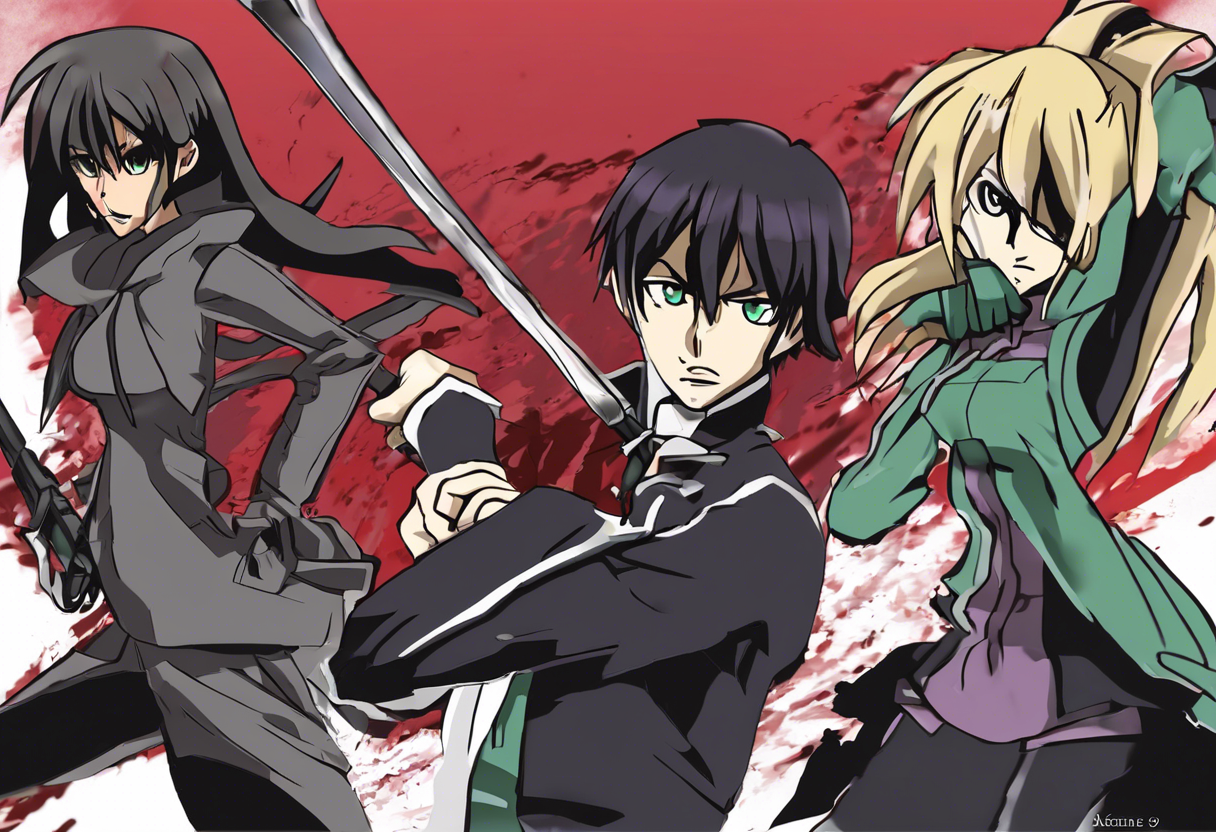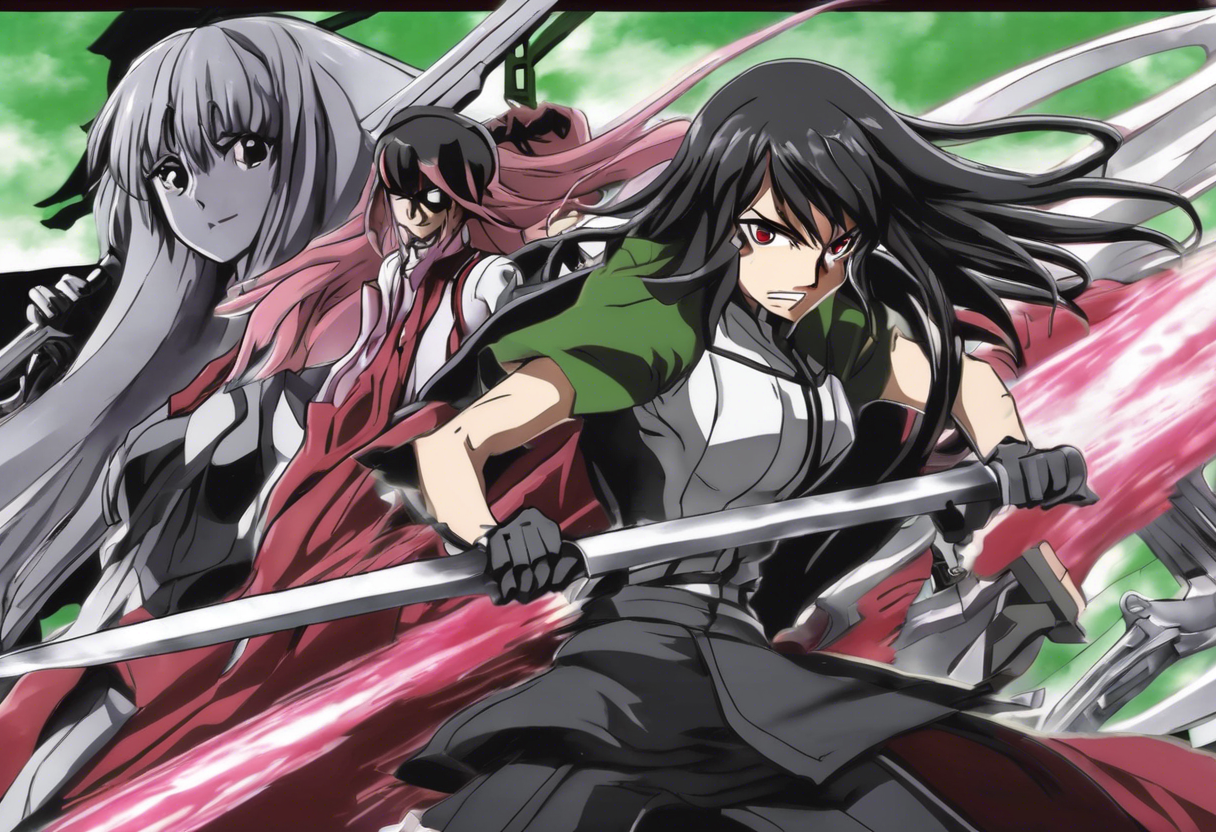Contents
Article Title
Akame ga Kill Episode 9: Kill the Lust for Combat – A Deep Dive
Introduction
Akame ga Kill Episode 9, titled "Kill the Lust for Combat" (Japanese: 戦闘狂を斬る, Sentōkyō o Kiru), is a pivotal installment in the anime series based on the manga of the same name by Takahiro and Tetsuya Tashiro. This episode, directed by Sasaki Junhito and written by Machita Doko, was first aired on September 1, 2014. The series itself is known for its dark fantasy setting, intense action sequences, and a narrative that delves into themes of morality, corruption, and the human condition.
Produced by White Fox, Akame ga Kill has garnered a significant following for its complex characters, intricate plot, and the moral ambiguities it presents. Episode 9 stands out for its intense character development, particularly focusing on the aftermath of previous battles and the introduction of new conflicts. The episode’s production history reflects the meticulous attention to detail and the creative vision of its writers and directors, making it a standout within the anime genre.
Plot Summary
The episode begins with Mine, a member of the Night Raid, testing her injured arms in a hot spring, confirming that she has finally recovered from her previous battle with Seryu [2][3]. This recovery is significant, as it marks a turning point for Mine, who is now more determined than ever to avenge the deaths of her comrades Sheele and Bulat.
At the Night Raid’s dojo, Mine seeks out a sparring partner to hone her skills further. Meanwhile, Tatsumi and other members of Night Raid, including Lubbock and Leone, are engaged in a rigorous training session. Akame, one of the strongest members of the group, and Leone are literally on the backs of Tatsumi and Lubbock as they do pushups, highlighting the intense physical demands of their training regimen [5].
Najenda, the leader of Night Raid, assigns Akame as the temporary leader before she departs to recruit new members. This decision underscores the trust and respect Akame has earned within the group. As Najenda leaves, the Jaegers, a rival group working for the Empire, assemble under the leadership of Esdeath. Esdeath’s introduction is marked by her brutal and ruthless demeanor, setting the stage for the conflicts to come [5].
The Jaegers include Wave, Kurome, Seryu, Dr. Stylish, Run, and Bols, each with their unique abilities and motivations. Esdeath’s mission is to hunt down the enemies of the Empire, and her methods are characterized by excessive cruelty. This is highlighted by Lubbock’s explanation to Tatsumi and Leone about Najenda’s past disgust with Esdeath’s actions against the southwestern tribal army [5].
Esdeath sponsors a martial arts tournament, ostensibly to find a worthy marital suitor, but in reality, it is a ploy to identify and recruit strong fighters for her cause. Tatsumi, disguising himself as a blacksmith, enters the tournament. His exceptional combat skills quickly make him a standout, and he flawlessly defeats a bullheaded opponent in the arena, winning the tournament. This victory catches Esdeath’s attention, and she becomes infatuated with Tatsumi’s prowess [5].
Esdeath’s infatuation leads her to shackle Tatsumi and take him to the palace, setting the stage for a potential rescue mission by Night Raid. Akame, Leone, Mine, and Lubbock learn about Tatsumi’s situation and discuss whether they should risk a rescue, knowing the dangers involved.
The episode also delves into the psychological and emotional states of the characters. Mine’s determination to avenge her fallen comrades is a recurring theme, as is Tatsumi’s growing involvement with the Night Raid and his moral dilemmas. The dynamic between the characters, particularly the camaraderie and trust within Night Raid, is a central focus of the episode.
The setting of the episode shifts between the serene environment of the hot spring, the intense training grounds of the Night Raid, and the brutal arena of the tournament. Each setting serves to highlight different aspects of the characters and their world. The narrative arcs of the characters are further developed, with significant emphasis on their motivations and the conflicts they face.
Themes and Symbolism
Episode 9 of Akame ga Kill explores several central themes that are pivotal to the series. One of the most prominent themes is the morality of violence and the consequences of one’s actions. The character of Esdeath embodies the extreme end of this spectrum, with her actions driven by a lust for combat and a disregard for human life. This contrasts sharply with the Night Raid, who, despite their violent methods, are motivated by a desire to protect and avenge their comrades [5].
The theme of camaraderie and trust is also deeply explored. The relationships within Night Raid are built on mutual respect and trust, which is evident in their training sessions and discussions about rescuing Tatsumi. This camaraderie serves as a symbol of hope and resilience in a world filled with violence and corruption.
The character of Tatsumi serves as a symbol of innocence and moral ambiguity. His entry into the tournament and subsequent capture by Esdeath highlight the complexities of his situation and the moral dilemmas he faces. His character represents the struggle between doing what is right and surviving in a world where morality is often blurred.
Cultural Impact
Akame ga Kill Episode 9 has had a significant cultural impact, particularly within the anime community. The episode’s intense action sequences, coupled with its deep character development, have made it a favorite among fans. The introduction of Esdeath as a formidable and ruthless antagonist has also been widely praised, adding to the series’ reputation for complex and compelling characters.
The episode’s influence can be seen in other anime series that have followed, with many incorporating similar themes of morality and the consequences of violence. The series has also been referenced in various forms of media, including fan art, cosplay, and fan fiction.
Critical Reception
Upon its release, Akame ga Kill Episode 9 received positive reviews from critics and audiences alike. The episode was praised for its intense action sequences, character development, and the introduction of new conflicts. The animation quality and the soundtrack were also commended for enhancing the overall viewing experience.
However, some critics noted that the episode’s pacing could be improved, with some scenes feeling a bit rushed. Despite this, the episode was generally well-received, with many considering it one of the highlights of the series.
In subsequent years, the episode has continued to be praised for its contribution to the overall narrative of Akame ga Kill!. The character development and the themes explored in this episode have been particularly highlighted as strengths of the series.
Legacy
Akame ga Kill Episode 9 continues to be relevant in the world of anime and beyond. The episode’s influence on character development and storytelling can be seen in many subsequent anime series. The themes of morality, camaraderie, and the consequences of violence remain timely and resonate with audiences.
The episode’s place in cinematic history is secured as a pivotal moment in the Akame ga Kill series, showcasing the series’ ability to blend intense action with deep character development and complex themes. It continues to inspire filmmakers, artists, and audiences, making it a lasting part of anime culture.
References
- https://animevice.fandom.com/wiki/Episode_9_(Akame_ga_Kill!)
- https://akamegakill.fandom.com/wiki/Episode_9
- https://theadultswimsquad.wordpress.com/2015/10/11/akame-ga-kill-episode-recap-kill-the-battle-fanatic/
- https://animesuperhero.com/forums/threads/c-c-akame-ga-kill-kill-the-dream-9-12.5502201/
- https://en.wikipedia.org/wiki/List_of_Akame_ga_Kill!_episodes







